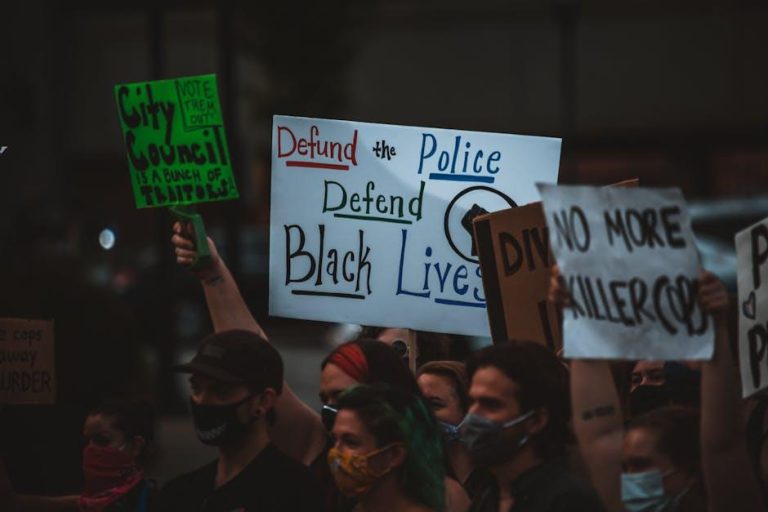
Tackling Racial Microaggressions in Dental Training: A Novel Approach Using Comics
Addressing racial microaggressions in dental education is critical for creating culturally competent and inclusive healthcare professionals. This article explores an innovative approach highlighted in Nature—using comics to educate dental students about racial microaggressions. We’ll cover how this creative method enhances awareness, empathy, and practical skills to combat implicit bias, fostering more equitable dental training environments.
Understanding Racial Microaggressions in Dental Training
Before diving into the solution, it’s important to recognize what racial microaggressions are and their impact on dental education.
- Definition: Subtle, often unconscious, discriminatory comments or behaviors targeting racial minority groups.
- Examples in dental training: Dismissive attitudes, stereotyping patients or peers, assumptions about skill or knowledge based on race.
- Effects: These microaggressions create a hostile learning environment, lower confidence among minority students, and impair patient-dentist communication.
The Need for Innovative Approaches in Dental Education
Traditional anti-racism training sometimes falls short in engaging students or leading to lasting behavioral change. The complexity of unconscious bias requires novel and effective educational tools:
- Didactic lectures alone may lack emotional engagement or contextual application.
- Role-playing can be intimidating and less accessible to some learners.
- Visual storytelling via comics offers an underutilized medium combining narrative, imagery, and humor or seriousness to enhance retention and empathy.
Comics as a Novel Tool: Insights from Nature
In a recent Nature publication, researchers introduced comics into dental training as a method to tackle racial microaggressions. Here’s why this approach stands out:
- Engagement: Comics captivate learners by combining visual and textual elements, making complex concepts more approachable.
- Empathy-building: Narratives portraying lived experiences allow students to better understand the emotional impact of microaggressions.
- Reflection: Comics stimulate discussions and self-reflection through relatable scenarios.
- Accessibility: They cater to diverse learning styles, including visual learners.
How Comics Are Integrated into Dental Training
- Scenario-Based Learning: Comics depicting scenarios of microaggressions between peers or with patients.
- Group Discussions: Following readings, facilitated conversations encourage open dialogue and awareness.
- Reflection Exercises: Students write or share personal insights related to the comics’ themes.
- Faculty Involvement: Training staff use comics to model inclusive communication and address biases constructively.
| Benefit | Description | Outcome |
|---|---|---|
| Improved Awareness | Visual depiction of subtle biases students may overlook. | Heightened sensitivity to racial microaggressions. |
| Enhanced Empathy | Storylines foster emotional connection to minority experiences. | Greater compassion in patient care and peer interactions. |
| Effective Communication | Practice scenarios encourage inclusive dialogue strategies. | Reduced misunderstandings and conflict in clinical settings. |
| Long-Term Behavior Change | Engaging method encourages reflection and personal growth. | More inclusive culture in dental schools and clinics. |
Benefits of Using Comics to Address Microaggressions in Dental Education
Incorporating comics into dental curricula offers multiple advantages, making training more impactful:
- Increased student engagement: Comics break monotony and capture attention.
- Safe space for dialogue: Fictionalized but realistic stories promote honest conversations.
- Improves cultural competence: Helps students understand diverse patient backgrounds.
- Reinforces learning: Images paired with narratives aid memory retention.
Practical Tips for Implementing Comics in Dental Training
Educators interested in adopting this innovative approach can follow these guidelines:
- Select relatable content: Use comics depicting realistic scenarios from dental clinics and schools.
- Facilitate discussions: Create a space where students feel comfortable sharing thoughts post-reading.
- Integrate with broader DEI initiatives: Align comics use with diversity, equity, and inclusion training programs.
- Evaluate impact: Use surveys and reflections to assess changes in student attitudes and knowledge.
- Collaborate with artists and experts: Ensure accuracy and sensitivity in comic narratives.
Case Study: Success Story from a Leading Dental School
One pioneering dental school incorporated comics into its curriculum to combat racial microaggressions. Within one academic year, the program recorded:
- 45% increase in student-reported awareness of microaggressions.
- 30% improvement in peer-to-peer inclusivity ratings.
- Positive qualitative feedback about the relatability and effectiveness of comics.
This case demonstrates the tangible benefits of innovative storytelling in transforming dental education culture.
Firsthand Perspective: A Dental Student’s Experience
“Reading the comics was eye-opening. They showed me situations I hadn’t considered might be hurtful or biased. Discussing these scenes with classmates opened my eyes to how microaggressions subtly affect people daily. This approach made the learning real and personal — something traditional lectures never did for me.”
– Maya L., 3rd Year Dental Student
Conclusion: Comics as a Catalyst for Change in Dental Training
Tackling racial microaggressions in dental education demands creative, engaging, and empathetic teaching methods. Comics represent a compelling tool that encourages reflection, conversation, and ultimately cultural transformation within dental schools. By integrating this novel medium, educators can nurture a generation of dental professionals equipped not only with clinical skills but also with the cultural competence necessary for equitable patient care.
As the dental field continues to evolve, embracing innovative educational strategies like comics can play a critical role in promoting inclusivity, reducing implicit bias, and improving health outcomes for diverse populations.


